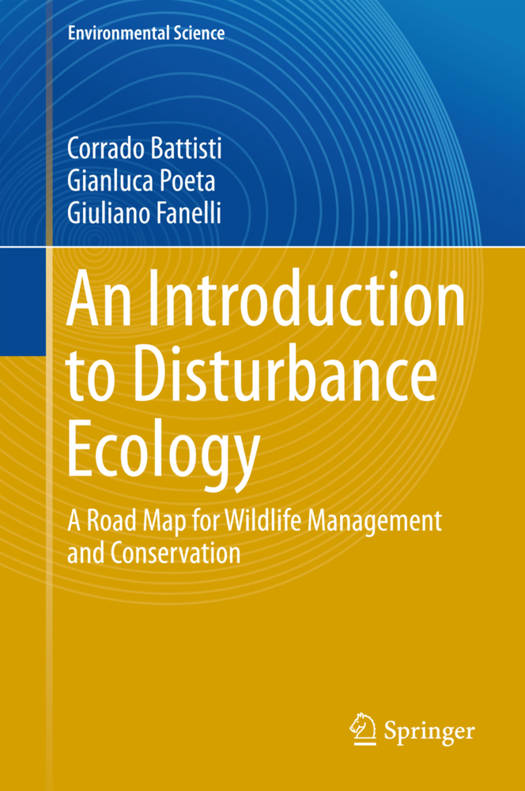
- Afhalen na 1 uur in een winkel met voorraad
- Gratis thuislevering in België vanaf € 30
- Ruim aanbod met 7 miljoen producten
- Afhalen na 1 uur in een winkel met voorraad
- Gratis thuislevering in België vanaf € 30
- Ruim aanbod met 7 miljoen producten
Zoeken
An Introduction to Disturbance Ecology
A Road Map for Wildlife Management and Conservation
Corrado Battisti, Gianluca Poeta, Giuliano Fanelli
€ 105,45
+ 210 punten
Uitvoering
Omschrijving
This book represents an introductory review of disturbance ecology and threat analysis, providing schematic concepts and approaches useful for work on sites that are affected by the impact of human actions. It is aimed at conservation and environmental practitioners, who will find tips for choosing methods and approaches when there are conflicts between the natural components and human activity. It is also addressed to students of applied ecology, ecosystem management, land-use planning and environmental impact assessment. It discusses a number of topics covered in the programs of many university courses related to basic ecology and ecology of disturbance, the latter constituting a field of great interest because of its implications and repercussions in applied territorial science.
The book is divided into two parts: the first focuses on the theoretical and disciplinary framework of the ecology of disturbance, while the second is devoted to the analysis of anthropogenic threats. This, in particular, discusses the most recent approach, which uses a conventional nomenclature to allow a coarse-grained quantification and objective assessment of threat impact on different environmental components. Such an approach facilitates the comparison of hierarchically different events and, therefore, helps define the priorities for management and conservation strategies.
The book is divided into two parts: the first focuses on the theoretical and disciplinary framework of the ecology of disturbance, while the second is devoted to the analysis of anthropogenic threats. This, in particular, discusses the most recent approach, which uses a conventional nomenclature to allow a coarse-grained quantification and objective assessment of threat impact on different environmental components. Such an approach facilitates the comparison of hierarchically different events and, therefore, helps define the priorities for management and conservation strategies.
Specificaties
Betrokkenen
- Auteur(s):
- Uitgeverij:
Inhoud
- Aantal bladzijden:
- 178
- Taal:
- Engels
- Reeks:
Eigenschappen
- Productcode (EAN):
- 9783319324753
- Verschijningsdatum:
- 30/07/2016
- Uitvoering:
- Hardcover
- Formaat:
- Genaaid
- Afmetingen:
- 156 mm x 234 mm
- Gewicht:
- 449 g

Alleen bij Standaard Boekhandel
+ 210 punten op je klantenkaart van Standaard Boekhandel
Beoordelingen
We publiceren alleen reviews die voldoen aan de voorwaarden voor reviews. Bekijk onze voorwaarden voor reviews.











